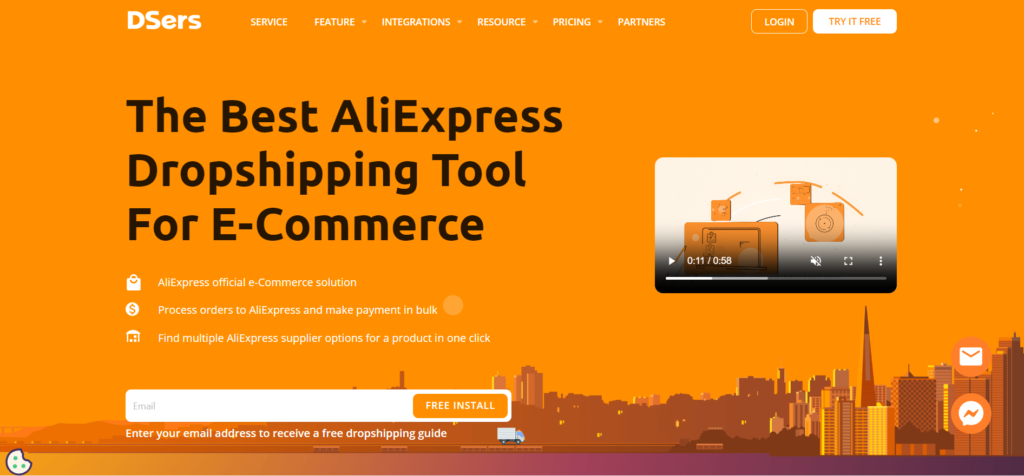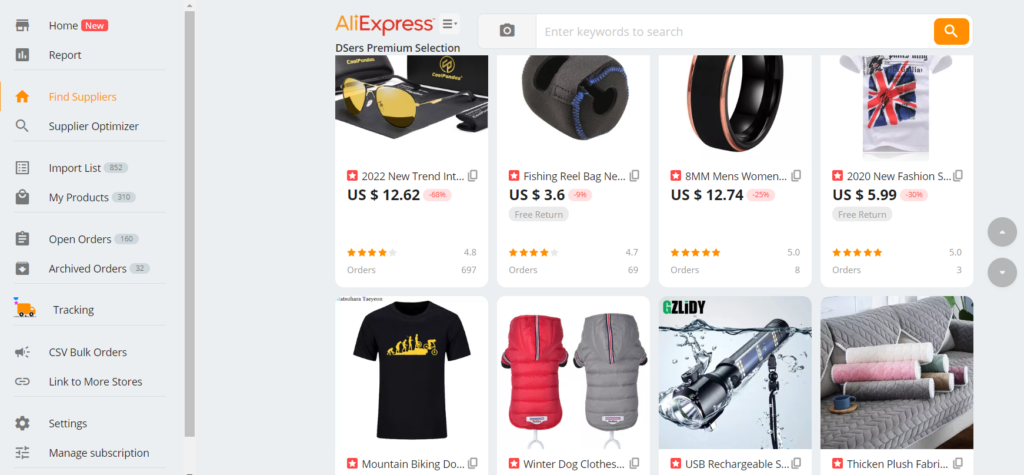Have you ever heard about dropshipping? Dropshipping is a business model in which an entrepreneur sells products online without keeping any inventory which eliminates the need for the entrepreneur to invest in inventory and warehouse space, making it an attractive option for those looking to start an online business.
However, just like any other e-commerce business, dropshipping requires a well-optimized sales funnel to maximize conversions. In this article, we’ll discuss the different stages of the dropshipping funnel, key strategies to optimize it, and the tools and technologies you can use to improve your conversion rates. Before that, let’s understand what dropshipping is in detail first.
What Is Dropshipping
So what is dropshipping? Dropshipping is a great way for online store owners to start and scale their businesses without having to worry about inventory management. And with impressive dropshipping tools, managing a dropshipping business has never been easier.
One of the most popular tools for dropshipping is DSers, which is an all-in-one platform that helps store owners manage their orders, automate their fulfillment process, and track their shipments. With DSers, store owners can easily import products from their suppliers, set up their pricing, and fulfill orders with just a few clicks.

DSers also offers a range of features that make it easier for store owners to manage their dropshipping business. For example, the platform provides automatic order tracking and makes it easy to manage returns and refunds. It also offers a product analyzer that helps store owners find the best products to sell, as well as a bulk editing tool that allows them to make changes to their product listings in bulk.
In addition to the convenience that DSers offers, dropshipping has several other advantages. For one, it allows store owners to start selling products with very little upfront investment. Because they don’t have to purchase inventory upfront, they can start selling products right away and reinvest profits into growing their business.
Dropshipping also allows store owners to offer a wider range of products without the risk of being stuck with unsold inventory. Since they aren’t purchasing inventory upfront, they can experiment with different products and niches without worrying about the cost of warehousing unsold products.
Understanding the Dropshipping Funnel
A dropshipping funnel consists of several stages that a customer goes through from the initial visit to the final purchase. Understanding the different stages and key metrics to track for each stage is crucial to optimizing the funnel for higher conversions.
Let’s check our stages a dropshipping funnel includes:
- Awareness: At this stage, the customer becomes aware of your brand and products. This can be through social media, search engines, or other marketing channels.
- Interest: The customer expresses interest in your products by clicking on an ad, visiting your website, or subscribing to your newsletter.
- Consideration: The customer is considering purchasing your product but may be hesitant due to price or other factors.
- Purchase: The customer makes a purchase and becomes a customer.
- Loyalty: The customer becomes a repeat customer, which is essential for the long-term success of your business.
Apart from that, there are also some key metrics you should know such as click-through rates, conversion rates, cart abandonment rates, and customer lifetime value.
Key Strategies to Optimize Dropshipping Funnel for Higher Conversions
To optimize dropshipping funnels for higher conversions, it is essential to implement the following key strategies:
- Offer a clear and concise value proposition
A clear and concise value proposition can help customers understand the benefits of the product and why they should purchase it. A strong value proposition should highlight the unique selling points of the product and how it solves the customer’s pain points.
- Use high-quality product images and videos
High-quality product images and videos can help customers visualize the product and make an informed purchasing decision. It is essential to showcase the product from different angles and provide zoom functionality to allow customers to inspect the product details.

- Optimize website loading speed
Slow website loading speed can result in high bounce rates and poor user experience. It is essential to optimize the website loading speed by compressing images, reducing the number of HTTP requests, and using a content delivery network (CDN).
- Simplify the checkout process
A complicated checkout process can lead to cart abandonment and loss of sales. It is essential to simplify the checkout process by reducing the number of form fields, offering guest checkout, and providing multiple payment options.
- Use retargeting to regain visitors’ attention
Retargeting can help regain the attention of potential customers who left the website without making a purchase. It involves showing targeted ads to visitors who have previously interacted with the website.
- Implement urgency and scarcity tactics
Urgency and scarcity tactics can create a sense of urgency among customers and encourage them to make a purchase. Examples of urgency and scarcity tactics include limited-time offers, countdown timers, and low-stock notifications.
- Provide exceptional customer service
Exceptional customer service can help build trust and loyalty among customers. It is essential to provide prompt and helpful responses to customer queries and complaints.
- Leverage social proof to build trust
Social proof can help build trust and credibility among potential customers. Examples of social proof include customer reviews, testimonials, and social media mentions.
Tools and Technologies to Optimize Dropshipping Funnel
To optimize dropshipping funnels, it is essential to leverage various tools and technologies, including:
A/B testing tools: A/B testing tools can help test different variations of website elements to identify the best-performing version.
Heat mapping tools: Heat mapping tools can help visualize the user behavior on the website and identify areas of improvement.
Conversion rate optimization (CRO) tools: CRO tools can help analyze the website’s performance and provide recommendations to optimize the conversion rate.
Analytics tools: Analytics tools can help track and analyze website performance metrics, including website traffic, bounce rates, and conversion rates.
Live chat and chatbot tools: Live chat and chatbot tools can help improve customer service and provide quick responses to customer queries.
Measuring and Analyzing Dropshipping Funnel Performance
Measuring and analyzing dropshipping funnel performance is crucial to identify drop-off points and implementing changes to improve conversions. The following are some key metrics to monitor at each stage of the funnel:
- Awareness stage: Website traffic, click-through rates, and social media engagement.
- Consideration stage: Bounce rates, time spent on the website, pages per session, and exit rates.
- Conversion stage: Conversion rates, cart abandonment rates, and average order value.
Reviewing data to identify drop-off points and implementing changes based on data analysis can help improve the funnel’s performance and drive more sales.
Conclusion
Optimizing dropshipping funnels for higher conversions is crucial for businesses to stay competitive in the market. Implementing the strategies and tools discussed in this article can help achieve higher conversion rates and drive more sales. By offering clear value propositions, using high-quality product images and videos, optimizing website loading speed, simplifying the checkout process, using retargeting, implementing urgency and scarcity tactics, providing exceptional customer service, and leveraging social proof, businesses can improve their dropshipping funnel’s performance. Measuring and analyzing the funnel’s performance using various tools and technologies can help identify drop-off points and implement changes to optimize the conversion rate.







